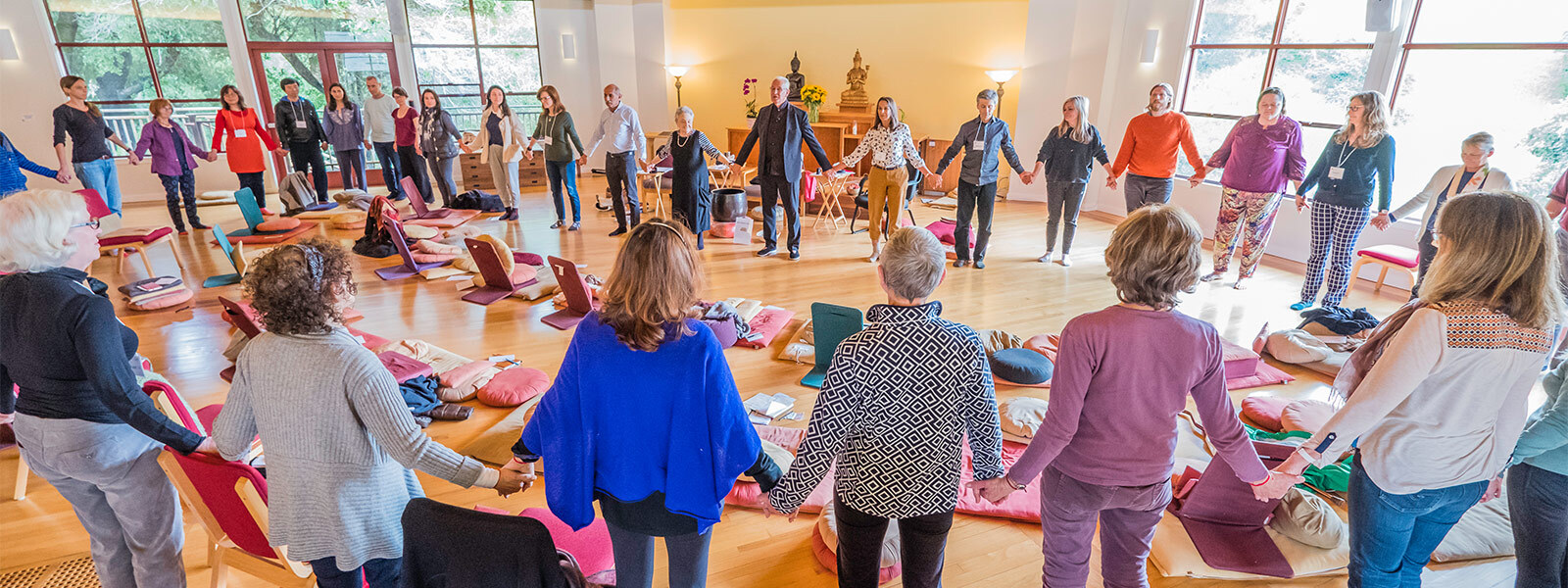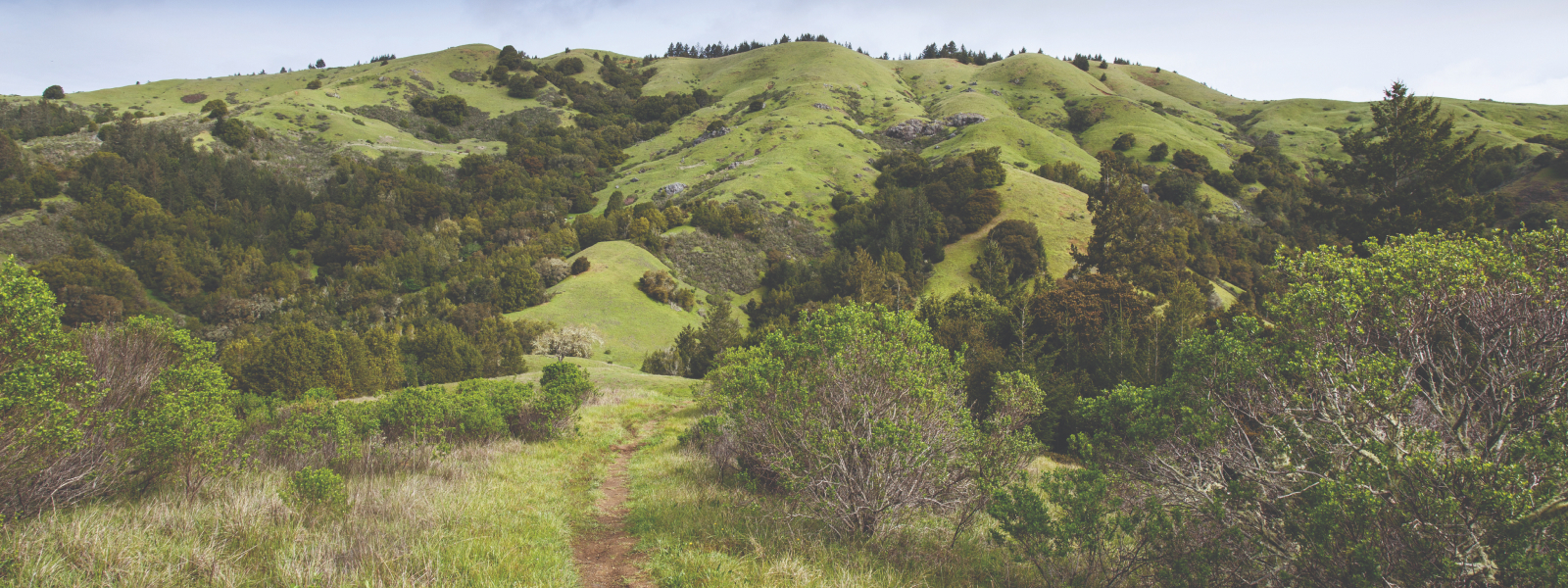Just as we never master the practices of meditation and lovingkindness, but always find that there’s more to experience, more to learn, and more to awaken to, the practice of waking up to the conditions that shape our world is ongoing. The study of history, focusing on social justice and the practice of collective action that expresses compassion for the suffering of the world, can be thought of in Buddhist terms as the study of conditionality. The Buddha described conditionality as that which connects any situation or experience with what happens next.
When this exists, that is; due to the arising of this, that arises.
When this doesn’t exist, that is not; due to the cessation of this, that ceases.
(Saṁyutta Nikāya 12.21)
This teaching points to how everything we experience arises from actions in the past and their results in the present, and how our actions in the present become the conditions for the future. We understand conditionality to be both one of the most central teachings of the Buddha and a powerful lens through which to understand the relationship between the Dharma and social action.
The painful impacts of past actions such as those that fueled colonialism, slavery, Indigenous genocide, and environmental devastation are still resonating throughout the world. Unless both individuals and communities understand their relationship to those conditions, and work to change the social structures that perpetuate oppression, the nature of conditionality is that the harm is bound to continue. Compassionate action to relieve suffering and create the conditions for beings to thrive is the heart of Buddhist social engagement.
This page offers a selection of talks and resources that bring together Buddhism and social justice, emphasizing the perspectives on social engagement and wise action in our Insight lineage and the streams of Buddhist thought that have shaped our practice. These lists are truly just a beginning. In this time of global crisis, we offer them in support of an equitable and reparative spiritual community, and toward the cultivation of wise action.
May our practice and study be for the benefit of all.
Peace & Nonviolence
The heart of Buddhist social action, and in many ways the entire practice, is nonviolence. Embodied in the first precept to not take life, nonviolence guides Buddhist thought both around how goodness and safety can be strengthened in the world, and how to wisely respond to war, violence, and oppression. Nonviolence is not easy. Conflicts in the world demand that we take sides, and can seem to offer no alternative to continuing cycles of violence. Writing about the practice of nonviolence in response to the war in Gaza, the Spirit Rock guiding teachers reflect on non-harming as central to the path:
Our path of practice, the Noble Eightfold Path, involves two factors of non-harming, in the limbs of intention and action. The second factor of wise intention includes the intention of nonviolence (avihiṁsāsaṅkappa), and the intention of good will (avyāpādasaṅkappa). The fourth path factor of wise action includes abstaining from killing (pāṇātipātā veramaṇī).
The Buddha’s teachings are clear that intending harm and causing harm is unwholesome and that we are to cultivate lovingkindness or goodwill as the foundation for all of our actions. The Buddha expressed these teachings in many beautiful ways. Our aim is always to uphold them.
(Guiding Teacher Reflections on War & Nonviolence, May 2024)
Buddhism is fundamentally a religion of peace, and praises both inner peace in the heart and peace in the world. Connecting the intention of non-harming with action amid the complex conditions of the world requires discernment, restraint, and equanimity. Going “against the stream” of conventional thinking, Dharma practice cultivates a heart of peace and nonviolence that extends compassion to all, and this radical way of being changes both our own lives and the lives of those around us.
Engaged Buddhism
While Buddhism has always contained support for social engagement, there have been some schools and movements within Buddhist cultures that focus primarily on the inner life and personal liberation while others give much more emphasis to action in the world and collective liberation. In the twentieth century, social movements arose in Sri Lanka, Thailand, Vietnam, and throughout the Buddhist world that emphasized compassion-based engagement with the crises of the world that were so apparent as the colonial era ended. These movements, championed by Buddhist leaders like Thich Nhat Hanh in Vietnam, Sulak Sivaraksa in Thailand, A.T. Ariyaratne in Sri Lanka, and Zen teacher Robert Aitken in Hawai’i, developed the body of thought and network of communities now called “Engaged Buddhism.”
As a practice tradition, Engaged Buddhism develops the link between inner and outer cultivation, often centering the relational meditations of the brahmavihāras, especially compassion. American monastic and scholar Bhikkhu Bodhi refers to the inner and outer aspects of practice as “ascending” toward liberation and “descending” toward connection with the material suffering of the world.
Engaged Buddhist Organizations
Buddhist Peace Fellowship (Oakland, CA), founded by Robert Aitken, Roshi
International Network of Engaged Buddhists (Thailand), founded by Sulak Sivaraksa
Buddhist Global Relief, founded by Bhikkhu Bodhi, focusing on relieving hunger and food insecurity
Sarvodaya (Sri Lanka), founded by Dr. A.T. Ariyaratne
Sacred Mountain Sangha (Sebastopol, CA), founded by Spirit Rock teachers Thanissara and Kittisaro
East Bay Meditation Center (Oakland, CA), founded by Spirit Rock teachers Larry Yang, Spring Washam, and others
One Earth Sangha (virtual), founded by Spirit Rock CDL graduate Kristin Barker, with Spirit Rock teachers including James Baraz, Mark Coleman, Kaira Jewel Lingo, and Susie Harrington
Plum Village, founded by Ven. Thich Nhat Hanh
Self-care, Resilience, Healing
Caring for the world begins with caring for ourselves, yet self-care can be elusive in a culture where overwork is endemic, and oppression and poverty make rest and healing difficult to find for so many. The phrase “self-care” originated in activist communities, where the work of meeting the crises of the world is truly endless, and burnout is so prevalent. In engaged Buddhist practice, we must balance our work on behalf of others with nourishment of our own body, heart, and mind, cultivating self-compassion, meditation, rest, and wise community to support our work in the world. We might say, in Mushim Ikeda’s words, “I Vow to Not Burn Out,” committing to a balanced practice even as we engage with the beautiful Dharma work of service.
The Brahmavihāras as Social Justice Practice
The four divine abodes, or brahmavihāras—lovingkindness, compassion, sympathetic joy, and equanimity—are meditations that teach the heart to extend the beautiful variations of love in all directions, equally, without preference for some beings over others. This instruction is as radical as it is profound, refusing to allow powerful social distinctions like caste, religion, ethnicity, tribal identity, or even family to dictate the limits of the heart’s ability to care for others’ well-being. All beings suffer, the Buddha said, and thus are deserving of compassion and kindness.
The radical egalitarianism of the brahmavihāras is a natural sibling to the equity and inclusion goals of social justice practice. When we work to ensure that others are safe, protected, and cared for, whether they are like us or very different, we bring the brahmavihāras to life. This practice is not easy, and there are so many ways that tribalism and political difference can feel like important distinctions in public life, but it is possible. The heart can learn to balance affirming deeply-held ethical worldviews, maintaining healthy boundaries, and being adamant that no being is excluded from the heart of compassion and kindness.

Dharma & Climate
The climate crisis is perhaps the defining global issue of our time. Cutting across all social distinctions and geographies, the warming of the planet and destabilization of ecosystems due to human activity threatens every culture on the planet. As a wilderness-based tradition, Buddhism has always held a special reverence for the natural world, and the destruction of life caused by anthropogenic warming is heartbreaking to many in out Saṅgha and across the Buddhist world.
Many Spirit Rock teachers have centered their work on discussing and actively addressing the climate crisis, and we are proud to be a home for many of the most inspiring and innovative thinkers on the intersection between the Dharma and climate action. We are actively developing new programming to further the conversation between Buddhist thinkers and activists and the climate movement.
Dr. Martin Luther King Jr. & Ven. Thich Nhat Hanh
A special relationship in the modern history of Engaged Buddhism is the friendship and mutual inspiration shared by Vietnamese Zen master Thich Nhat Hanh and civil rights leader Dr. Martin Luther King Jr. The two leaders met in 1966 and shared a vision of the “beloved community,” trading letters and writing together until Dr. King’s death in 1968. Thich Nhat Hanh was able to tell Dr. King that “in Vietnam they call you a bodhisattva” (The Friendship of Martin Luther King and Thich Nhat Hanh). Dr. King was inspired by Buddhist and Gandhian nonviolence, and Thich Nhat Hanh brought elements of Dr. King’s understanding of the role of community and self-determination to his work in Engaged Buddhism. The weave between these two great bodhisattvas is a constant source of inspiration for us as for engaged Buddhists and those working for civil rights everywhere.
Books on the Dharma & Social Engagement by Spirit Rock Teachers
Bhikkhu Bodhi, The Buddha’s Teachings on Social and Communal Harmony (2016)
Larry Yang, Awakening Together: The Spiritual Practice of Inclusivity and Community (2014)
Ajahn Amaro & Ajahn Pasanno, The Dhamma and the Real World (2016)
Thanissara & Kitissaro, Listening to the Heart: A Contemplative Journey to Engaged Buddhism (2014)


